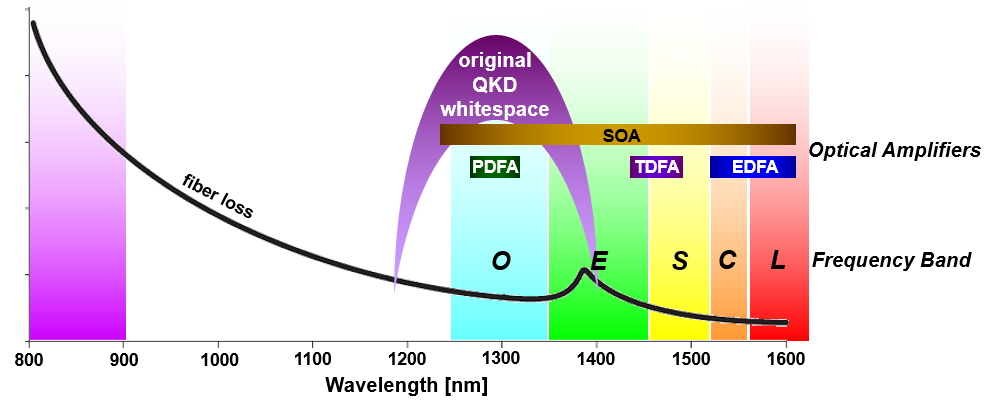Today we just want to pose a provocative question: To be or not to be in multi-band telecommunication systems?
It’s widely agreed that the provision of “dark” fiber for the operation of quantum networks is too expensive. “Dark” means that there are no telecommunication signals present together with the quantum signal, which would rather be a “lit” fiber scenario. We had already reported on the difficulties of establishing a co-existence of a quantum and classical channel that traverse the same fiber core. Typically one resorts to a waveband that is spectrally remote from the classical channels, such as the O-band around 1310 nm when classical channels are situated at the C-band around 1550 nm.
In order to obtain the highest capacities possible, classical telecommunications follow three strategies:
* Go beyond Shannon: They increase the modulation alphabet in (coherent) systems to boost the per-lane data rate.
* Employ multi-core fibers: Instead of having just one single-mode core for the fiber, new fibers currently under development feature many single-mode cores. This enables spatial multiplexing.
* Go beyond Erbium: Finally, a much bigger portion of the wide fiber spectrum can be exploited.
Considering the third case, that would mean that classical channels would span not just over the EDFA-supported C-band, but first over S-, C- and L-band (so about 1480 nm to 1610 nm) and then even over the O+E+C+S+L bands, meaning from 1290 to 1610 nm – by virtue of exploiting other fiber dopants for the optical amplifiers or by means of broadband wavelength converters.
What would such a multi-band telecommunication system and a vanashing quantum whitespace mean for QKD and co-existing quantum networks?
First, there would be no spectral space left to “hide” from the Raman noise and the spectral emission wings of the classical light sources. Second, very narrow filtering would be required to minimize the optical reception bandwidth in which the QKD receiver can be blinded by classical optical noise. Would that mean that continuous-variable QKD is the only viable way to go in highly spectrally occupied telecommunication segments? To be seen…
